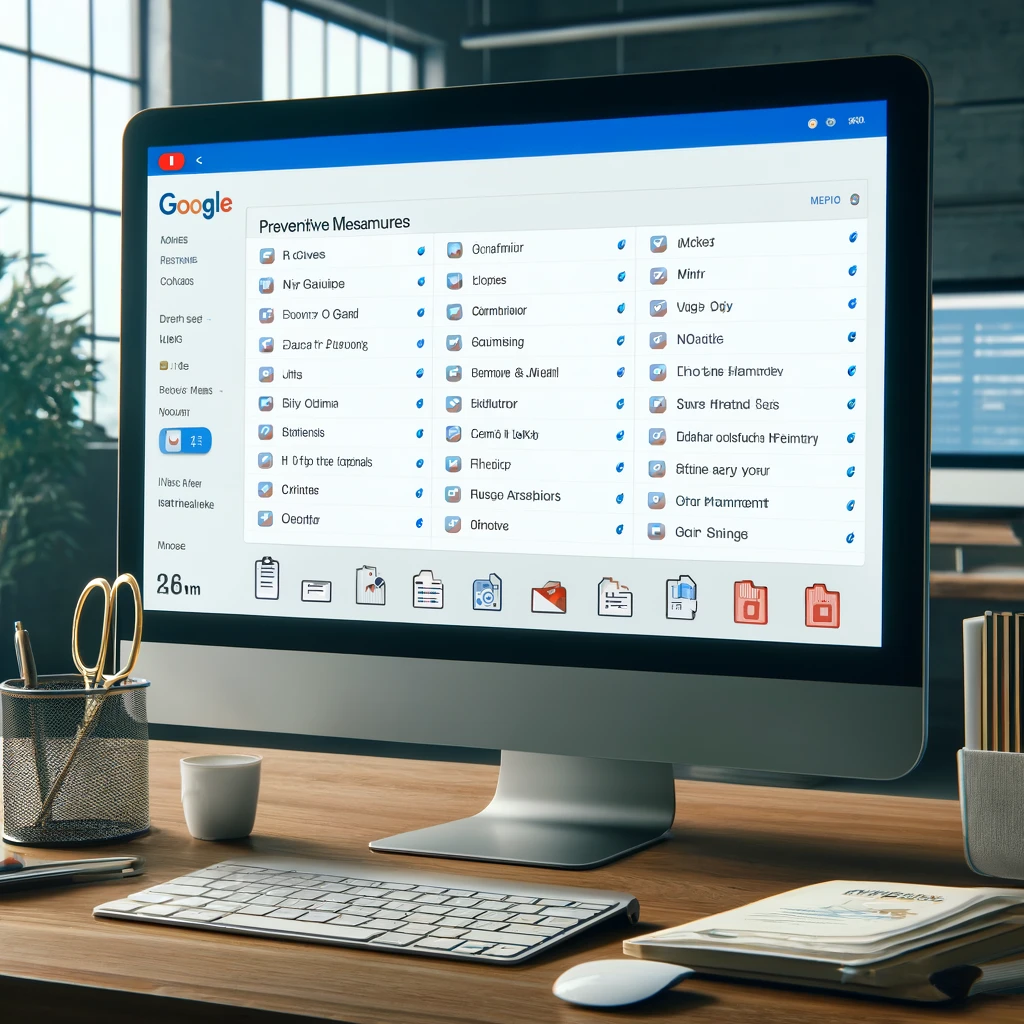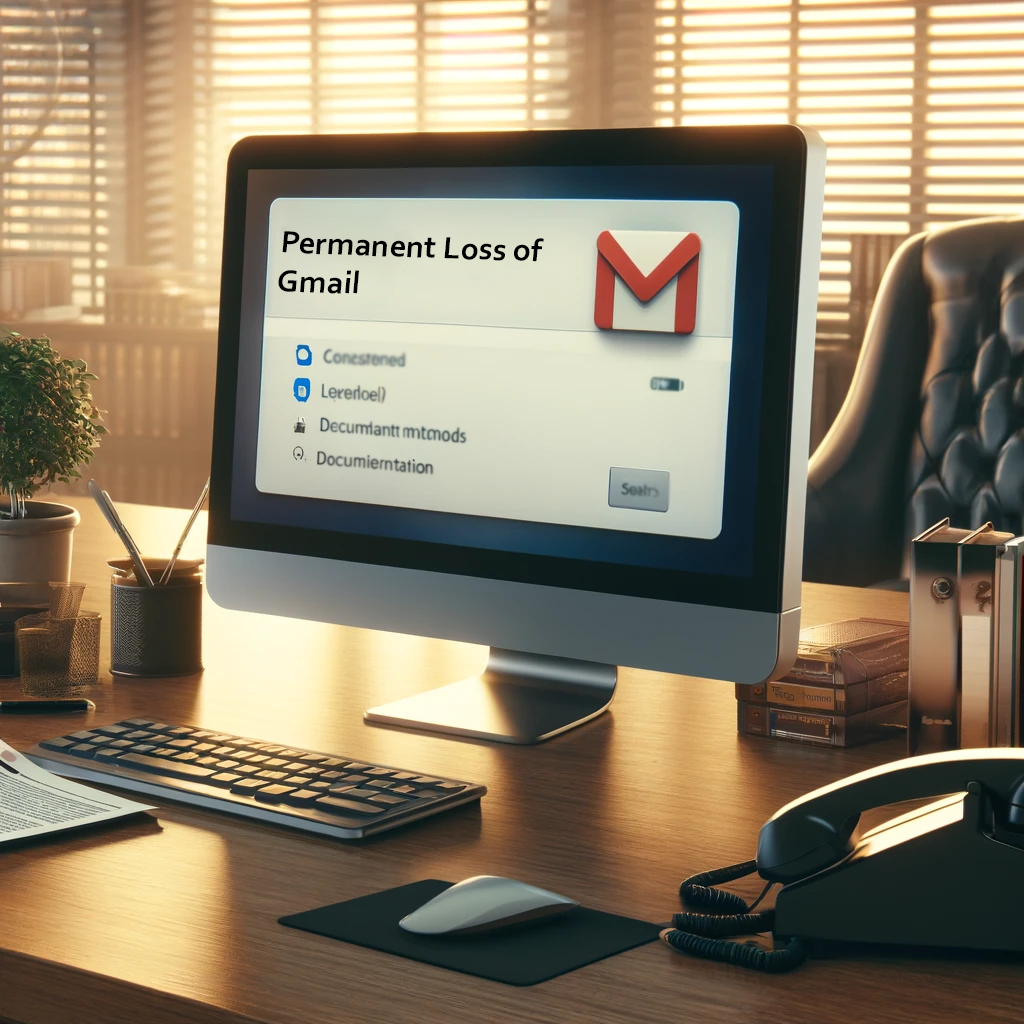Gmail Emails Recovery
In our digital world, emails are not just messages; they are often the lifelines that connect us to our professional tasks, personal interactions, and important life events. Losing access to an email due to deletion or technical issues can disrupt your day or derail important plans. Therefore, mastering how to recover deleted Gmail emails is a critical skill for anyone who relies on this vital communication platform.
Many users face the common predicament of accidentally deleting emails while tidying up their inboxes or falling victim to account hacks that lead to lost emails. Moreover, Gmail’s policy of automatically purging emails from the Trash after 30 days adds urgency to the process to recover deleted Gmail emails. Whether it’s recovering a single critical message or restoring a batch of emails, knowing how to recover deleted Gmail emails is indispensable.
This blog is crafted to help you understand how to recover emails in Gmail, providing step-by-step instructions to retrieve lost emails effectively. We will explore various methods, from using Gmail’s built-in recovery features to employing advanced techniques for emails that seem permanently lost. By the end of this blog, you will be well-equipped with the knowledge to not only recover deleted Gmail emails but also to safeguard them against future losses.
Understanding Gmail’s Email Recovery System
Gmail is engineered with a sophisticated architecture that is integral not only for the seamless handling of everyday email operations but also for providing options to recover deleted Gmail mails.
-
Gmail’s Email Storage and Retention Policies
 Gmail’s infrastructure robustly secures email data across multiple servers and backup systems. When users delete emails, these are not instantly wiped from the system; instead, they are moved to the Trash folder. Here, they remain for 30 days, during which to recover deleted Gmail emails is straightforward—simply restore them from the Trash. Post this period, Gmail purges the emails, classifying them as permanently deleted.
Gmail’s infrastructure robustly secures email data across multiple servers and backup systems. When users delete emails, these are not instantly wiped from the system; instead, they are moved to the Trash folder. Here, they remain for 30 days, during which to recover deleted Gmail emails is straightforward—simply restore them from the Trash. Post this period, Gmail purges the emails, classifying them as permanently deleted.
-
Retention Duration for Deleted Gmail Emails
Although Gmail adheres to a 30-day policy for Trash retention, it maintains backups for a longer period to safeguard against potential data loss. This extended backup system provides a critical, albeit limited, opportunity to recover deleted Gmail mails, particularly when deletion is due to unusual activities such as account compromises.
-
Gmail’s Built-in Recovery Features
Gmail offers several recovery features designed to address different deletion scenarios:
-
-
30-Day Recovery Window:
Users can recover deleted Gmail emails from the Trash folder directly within this time frame, making it easy to recover if they are within this window.
-
Extended Options to Recover deleted Gmail emails:
For emails that surpass the 30-day limit, Gmail still holds a possibility for recovery, depending on the backups and specific circumstances, assisting those who need to recover a deleted Gmail email.
-
Understanding these details about Gmail’s email recovery system empowers users to maximize their ability to retrieve lost emails, whether they seek to recover deleted Gmail emails.
Steps to Recover Deleted Gmail Emails
Losing an email can be stressful, but Gmail provides a user-friendly system to recover deleted Gmail emails. This section will walk you through the process of accessing Gmail’s “Trash” folder, restoring emails from it, and understanding the limitations of this recovery method.
Accessing Gmail’s “Trash” Folder
-
Log into your Gmail account:
Open your browser, go to the Gmail website, and sign in with your credentials.
-
Navigate to the Trash folder:
On the left side of the Gmail interface, you might need to click “More” to see additional options. Scroll down until you find the “Trash” folder and click on it. This will show all the emails that have been deleted within the last 30 days.
How to Restore Deleted Gmail Emails from the “Trash” Folder
-
Locate the email to recover:
Use the search bar within the “Trash” to find the specific email you wish to restore.
-
Choose the email:
Click on the checkbox next to the email(s) you want to restore.
-
Move the email back to your Inbox:
With the email(s) selected, click on the “Move to” icon (shaped like a folder) at the top of the page. Then, select “Inbox” or any other folder where you wish to restore the email. This action will recover deleted Gmail mails and return them to your chosen location.
Limitations of the “Trash” Folder Recovery
-
30-day time limit:
Emails are only retained in the Trash for 30 days. Post this period, Gmail automatically and permanently deletes them, making recovery impossible through conventional means. It is crucial to act quickly if you need to recover deleted Gmail emails.
-
Permanent deletion:
Once the emails are removed from the Trash or after the 30-day period, they are considered permanently deleted. In this scenario, traditional methods to recover deleted Gmail emails are not feasible.
This section provides a clear roadmap on how to recover the deleted Gmail mails from the “Trash” folder and highlights the urgency required due to the time-sensitive nature of the process. Whether you are trying to recover deleted Gmail emails or need to quickly restore an accidentally deleted message, following these steps will help you manage and retrieve your lost data efficiently.
Advanced Options to Recover Deleted Gmail Emails
When emails vanish after being deleted from Gmail’s “Trash” or due to account deletions, there are still advanced recovery methods that might help retrieve these elusive messages. This section delves into the use of third-party tools, and the essential security measures needed when engaging such options.
Third-party Software and Tools to Recover a Deleted Gmail Email
There are numerous third-party applications that promise the ability to recover deleted Gmail mails. These tools might access hidden or cached emails not directly retrievable through your account.
-
Selecting Appropriate Software:
Choose a recovery software like EaseUS or Stellar Mail Recovery, which are known for their ability to recover deleted Gmail emails.
-
Understand Legal Implications:
Make sure that the use of such tools does not violate Google’s terms of service, particularly regarding the use of your Gmail credentials.
-
Check Compatibility and Safety:
Verify that the tool is compatible with Gmail’s protocols and does not compromise your account’s security. If you are facing issues with account recovery, you can read our detailed blog on Gmail Account Recovery.
Security Factors When Using Third-party Recovery Tools
Using third-party software carries inherent risks, particularly regarding data security and privacy.
-
Data Protection:
Make sure that the tool to recover deleted Gmail emails does not store your credentials or downloaded emails to prevent potential data breaches.
-
Access Requirements:
Be cautious of tools that request extensive permissions to your Gmail account. Opt for those requiring minimal access.
-
Download from Trusted Sources:
Only download recovery tools from reputable and reliable sources to avoid introducing malware to your system.
Navigating advanced recovery options offers a potential backdoor to recover deleted Gmail emails. When utilizing third-party tools to recover a deleted Gmail email, it’s imperative to proceed with an informed approach, aware of both the technical capabilities and security implications involved.
Preventative Measures for Gmail Emails
Effective management and security of your Gmail account not only streamline your email handling but also drastically lower the risk of email misplacement or deletion. By adopting a set of preventative strategies, you can safeguard your emails and diminish the likelihood of having to recover deleted Gmail emails. This section outlines critical organizational tips, the optimal use of Gmail’s organizational features, and the importance of backing up your email data consistently.
Organizing Emails to Prevent Accidental Gmail Email Deletion
Proper email organization is a key preventive measure against accidental deletion, reducing the need to recover a deleted Gmail email.
-
Routine Inbox Maintenance:
Regularly review and organize your inbox to ensure it remains manageable and free from clutter. This practice helps prevent the accidental deletion of important emails.
-
Immediate Email Sorting:
Develop a habit of sorting emails into specific folders or labels right after reading them, which helps in reducing inbox clutter and minimizing the risk of losing important emails.
-
Highlighting Critical Emails:
Utilize Gmail’s starring feature to mark important emails, making them stand out in your inbox and reducing the chance they get overlooked or deleted.
Effective Use of Labels, Filters, and Archives in Gmail
Leveraging Gmail’s labels, filters, and archives can significantly aid in organizing your emails effectively, thereby helping to recover deleted Gmail mails if they are mistakenly moved or archived.
-
Implementing Labels:
Create and apply labels to categorize emails according to project, importance, or contact. This helps in quickly locating specific emails and reduces the chance of them being accidentally deleted.
-
Setting Up Filters:
Use filters to automate the management of incoming emails, such as applying labels, archiving, or moving emails to specific folders based on set criteria like sender.
-
Archiving Wisely:
Archive emails that are not immediately needed but should be retained for future reference. Archived emails are out of the main inbox but can be easily accessed, thus keeping your inbox clean without losing any emails.
Regular Backup of Gmail Data
Establishing a routine for backing up your Gmail data is crucial in ensuring you have a fallback option to recover deleted Gmail emails.
-
Utilizing Google Takeout:
Google Takeout provides an option to export and download your emails, allowing you to create periodic backups of your Gmail account.
-
Employing Third-party Backup Services:
Consider third-party backup services like Backupify or SpinBackup, which offer automated backups and make sure an additional layer of security for your email data.
-
Scheduling Backups:
Determine the frequency of your backups based on how often you use Gmail and the critical nature of your emails. Regular backups can be a lifesaver in recovering your emails should you need to recover deleted Gmail emails.
By employing these best practices for email organization and backup, you significantly enhance the security of your email data and reduce the frequency and necessity to recover deleted Gmail mails.
How to Handle Permanent Loss of Gmail Emails
Dealing with the permanent loss of Gmail emails can be distressing, particularly when recovery through standard methods such as checking the “Trash” or using recovery tools proves futile. Understanding the steps to take if recovery is not possible and exploring legal options are crucial, especially for business users who might face serious repercussions from such losses.
Steps to Take if It Is Not Possible to Recover Deleted Gmail Emails
When conventional recovery efforts fail to recover deleted Gmail emails, it’s important to systematically approach the situation to minimize any further impact:
-
Verification of Loss:
Make sure that you have exhaustively searched all potential locations for the missing emails, including all Gmail folders, “Trash,” and any external backups.
-
Account Security Check:
Review your Gmail account for any signs of compromise or changes that could have affected your email retention, which might give clues on how to prevent future losses.
-
Documentation:
For significant email losses, especially in business contexts, document every detail concerning the lost emails and your recovery attempts. This documentation can be crucial for legal or recovery processes.
Legal Options If Critical Gmail Emails Are Lost
For business users, the permanent loss of crucial Gmail emails may not only disrupt operations but also entail legal liabilities. If faced with such a scenario, consider the following legal avenues:
-
Seek Legal Advice:
Ask legal experts to explore your options regarding the loss of critical business emails. Understanding your legal standing can help in formulating an appropriate response.
-
Compliance and Data Handling:
Assess whether the email loss breaches any data protection laws or contractual obligations, and take appropriate measures to address any such violations.
-
Implementing Preventative Measures:
Ensure your email management practices are robust and compliant with relevant regulations to safeguard against future email losses and potential legal issues.
FAQs
Q1. How do I Recover Deleted Gmail emails from the Trash folder?
- A. To recover deleted Gmail mails from the Trash, log into your Gmail account, find the “Trash” folder on the left sidebar, select the emails you want to recover, and then move them back to your Inbox or another folder. Remember, emails can only be recovered from the Trash within 30 days of deletion.
Q2. How to Recover Old Emails in Gmail that are no longer in the Trash folder?
- A. To recover old emails in Gmail that are not in the Trash and have been deleted permanently, you might consider using third-party recovery tools. However, be sure to choose reputable software and understand the security implications of using such tools.
Q3. How to recover deleted forever emails from Gmail using third-party tools?
- A. To recover deleted forever emails from Gmail, choose a reliable third-party tool that is known for data recovery. Ensure the tool is safe, complies with data protection laws, and doesn’t require overly invasive access to your account.
Q4. What are the best practices to avoid the need to Recover a Deleted Gmail Email?
- A. To minimize the need to recover a deleted email in Gmail account, regularly back up your Gmail data, use labels and filters to organize emails effectively, and regularly review your Trash and Spam folders before they are automatically cleared.
Q5. How to Recover Deleted Gmail emails when I think they have been hacked?
- A. To recover deleted Gmail emails after a hacking incident, immediately change your password and secure your account with two-factor authentication. Then, contact Google support to assist in recovering any lost or deleted emails and to ensure no further security breaches occur.
Q6. How to recover lost emails in Gmail due to a syncing error?
- A. If you need to recover lost emails in Gmail due to a syncing error, first try disconnecting and reconnecting your email account to the email client. If this doesn’t work, check the All Mail and Trash folders in Gmail online, as emails might not be deleted but misplaced.
Q7. How can I recover deleted email from Gmail after 30 days?
- A. If you need to recover a deleted Gmail email after the 30-day Trash period, your options are limited. You can reach out to Google support for a potential recovery from their backups, especially if the deletion was unintentional or part of an account compromise.
Q8. How can I recover deleted email from Gmail if the Trash has been permanently emptied?
- A. To recover deleted Gmail emails after the Trash has been emptied, you may need to rely on third-party recovery tools or seek assistance from Google support.
Conclusion
In this comprehensive blog, we have explored various methods and best practices to help you manage and recover deleted Gmail mails, addressing everything from accidental deletions to complex losses. To summarize, we delved into Gmail’s internal recovery capabilities, showing you how to recover a deleted Gmail email directly from the “Trash” within a 30-day window. We also examined advanced recovery techniques for when emails are beyond traditional recovery methods, offering strategies for when you need to recover emails from Gmail that may seem permanently lost.
We strongly encourage you to implement the preventative measures discussed. Properly using Gmail’s organizational tools like labels, filters, and archives, along with setting regular backups, is crucial in minimizing the risk of email loss. Our goal is to help you maintain the security and integrity of your email communications, ensuring that you can always recover deleted Gmail mails effectively and with confidence.
To know more about Gmail Email Recovery and related issues and their solutions, visit our Gmail Support page.


Edward hill
After a hectic day of inbox management, I realized I might have mistakenly deleted an email containing essential legal documents. How can I recover a deleted Gmail email that’s critical for my upcoming legal proceedings?
Support Admin
If you’re looking to recover a deleted Gmail email containing crucial legal documents, the first place to check is your Gmail’s Trash folder. This folder retains deleted emails for up to 30 days. Navigate there, locate the email, and use the “Move to” option to restore it back to your Inbox or a designated folder. If the email was deleted more than 30 days ago, it’s worth reaching out to Google support to inquire if they can assist in recovering it from their backups, explaining the importance due to pending legal proceedings.
Carol Miller
During an end-of-quarter email cleanup, I accidentally removed several emails from a key client. How do I recover deleted Gmail emails that are vital to maintaining this important business relationship?
Support Admin
To recover deleted Gmail emails from a key client, quickly access your Trash folder where emails remain recoverable for 30 days post-deletion. If found, select these emails and click on “Move to” to restore them to your Inbox or another preferred folder. If it’s been over 30 days, consider checking any backups you might have configured through Google Takeout or third-party services like Backupify, which may have saved copies of your crucial communications.